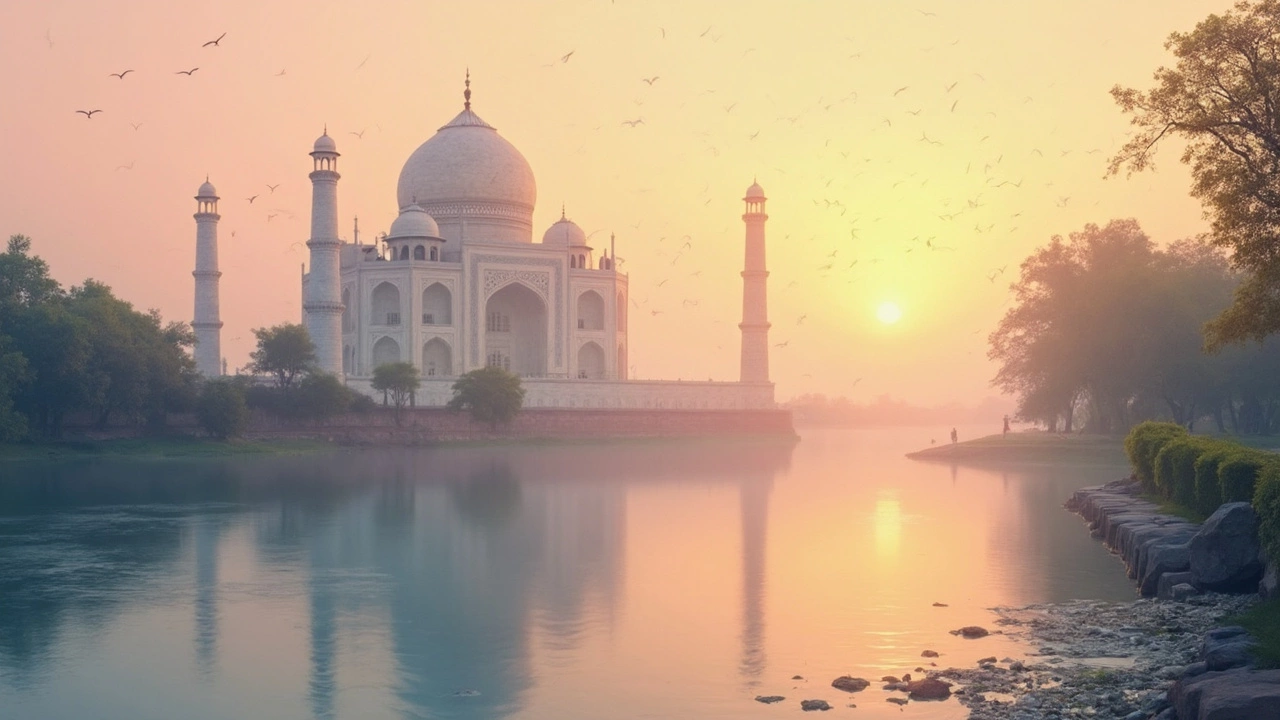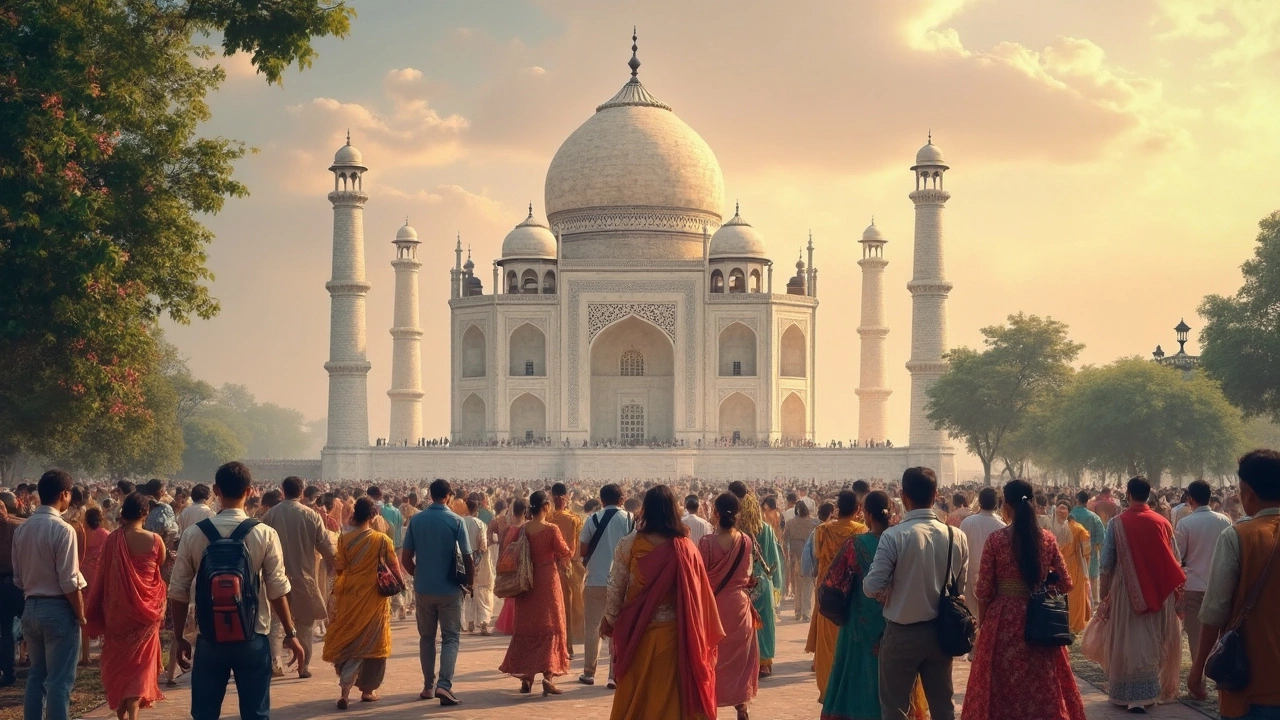Why the Taj Mahal Tops India’s Tourist Attractions List
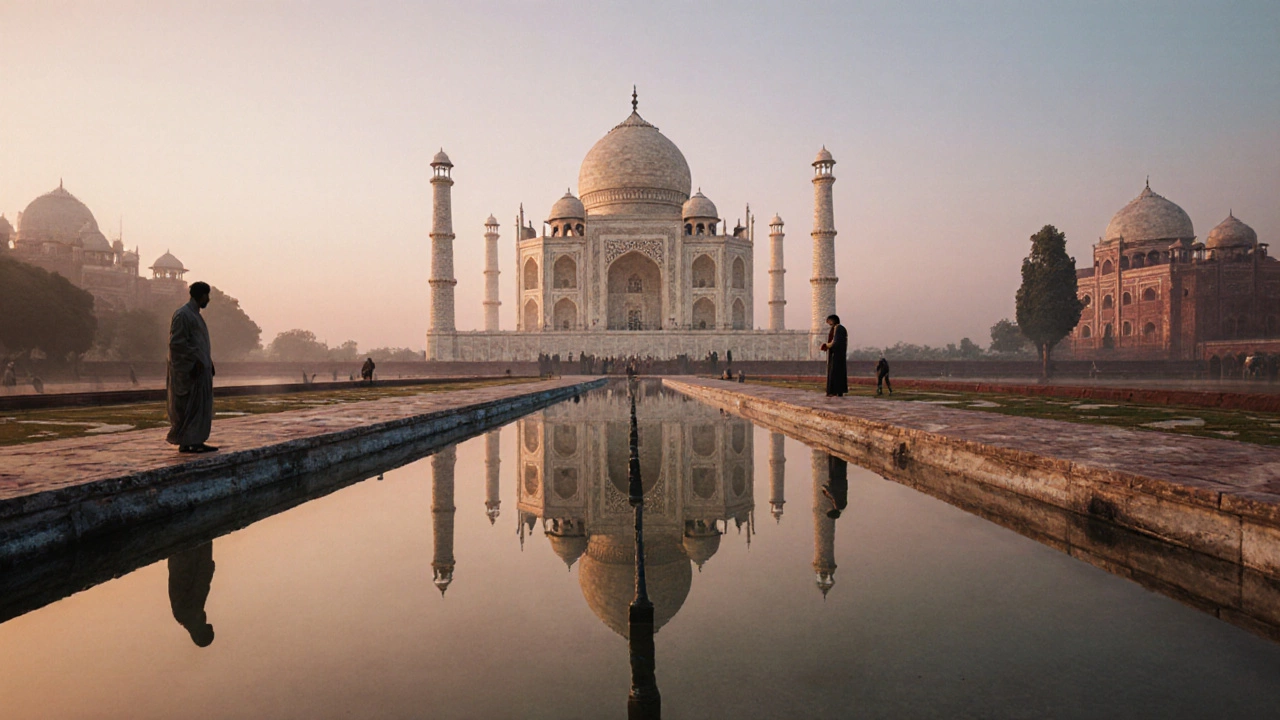
Taj Mahal Visitor Planner
Plan Your Taj Mahal Visit
Your Visit Plan
Best time to visit:
Estimated ticket cost:
Recommended attractions to visit:
Tips for your visit:
Key Takeaways
- The Taj Mahal consistently ranks as India’s #1 tourist magnet thanks to its iconic architecture and global fame.
- Over 8million visitors pass through each year, making it the most visited heritage site in the country.
- Best visiting months are October to March; early mornings avoid crowds and heat.
- Plan ahead: buy e‑tickets online, wear modest clothing, and respect photography rules.
- Combine the Taj Mahal with nearby gems like Agra Fort and Fatehpur Sikri for a richer experience.
When you hear "India’s number1 tourist attraction," most people instantly picture the Taj Mahal is a marble mausoleum on the banks of the Yamuna River in Agra, built in the 17thcentury as a tribute to Mughal emperor ShahJahan’s beloved wife Mumtaz Mahal. Its white dome, intricate inlay work, and romantic backstory have turned it into a global symbol of love and a must‑see for anyone traveling across the subcontinent.
What Makes the Taj Mahal the #1 Attraction?
The Taj Mahal checks every box that travelers look for:
- Architectural virtuosity: A blend of Persian, Ottoman, and Indian styles, using over 20,000tons of white marble.
- UNESCO recognition: Designated a World Heritage Site in 1983 (UNESCO World Heritage Site), confirming its outstanding universal value.
- Emotional pull: The love story behind its creation fuels curiosity and romance.
- Photogenic appeal: From sunrise over the reflecting pool to moonlit silhouettes, Instagrammers flock here.
All these factors combine to keep the Taj Mahal at the top of travel‑ranking lists from LonelyPlanet to TripAdvisor.
Visitor Numbers and Global Ranking
According to the Ministry of Tourism’s 2024 report, the Taj Mahal welcomed 8.2million domestic and international tourists, outpacing other heritage sites like Jaipur’s Amber Fort (2.4million) and Kerala’s Backwaters (1.9million). Its share of total heritage‑site visits in India sits at roughly 30percent.
Why such volume? The site’s accessibility-just a two‑hour drive from Delhi’s international airport-makes it a logical first stop for most itineraries. Moreover, the Indian government’s push for heritage‑tourism marketing amplifies its visibility worldwide.
Planning Your Visit: Practical Tips
Visiting the Taj Mahal is straightforward if you follow a few simple steps:
- Buy tickets online: The official e‑ticket portal releases slots three days ahead. Choose a morning slot (6am‑9am) for cooler weather and fewer crowds.
- Travel to Agra: From Delhi, take the Gatimaan Express (100km/h) to Mathura (about 2hours) and a short cab to the monument. Alternatively, the luxury Taj Express offers a direct 2‑hour ride.
- Dress modestly: As a sacred site, sleeved tops and long pants are expected. Shoes are screened at the entrance.
- Photography rules: No tripods, drones, or flash inside the mausoleum. Outside, a handheld camera is fine.
- Stay hydrated: Even in cooler months, the sun can be intense. Carry water and a hat.
For those who love depth, the guided audio tour, available in 10 languages, adds context about the Mughal Empire (Mughal Empire) and the monument’s engineering feats.
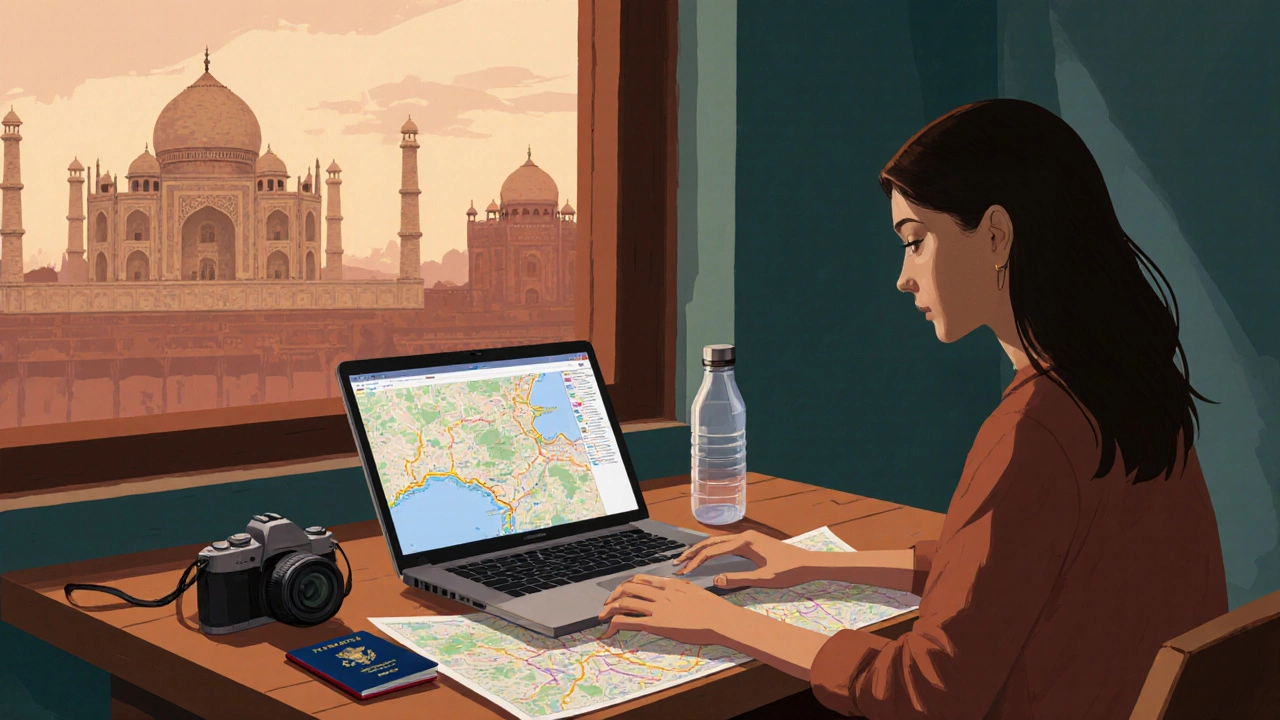
Best Time of Year
The climate in Agra swings dramatically. The sweet spot is OctoberthroughMarch:
- October‑November: Pleasant temps (15‑25°C) and post‑monsoon greenery.
- December‑January: Cool mornings-ideal for sunrise shots-and low humidity.
- February‑March: Warmter days but still comfortable; fewer local school trips.
Summer (April‑June) sees temperatures above 40°C and a spike in soot‑related discoloration on the marble, prompting nightly cleaning that can limit daytime access.
Nearby Gems to Extend Your Trip
If you have a full day, pair the Taj Mahal with these must‑see spots:
| Attraction | Distance from Taj Mahal | Key Highlight |
|---|---|---|
| Agra Fort | 2.5km | Red‑sandstone fortress, UNESCO site |
| Fatehpur Sikri | 40km | Abandoned capital of ShahJahan, stunning palaces |
| Mehtab Bagh | 0.5km (across the Yamuna) | Garden offering the best sunset view of the Taj |
All three are reachable by local rickshaw or a hired car. Booking a half‑day tour in the afternoon lets you capture the Taj at sunrise, then explore the fort and garden before sunset.
Comparison with Other Top Indian Attractions
| Attraction | Annual Visitors (millions) | UNESCO Status | Primary Appeal |
|---|---|---|---|
| Taj Mahal | 8.2 | Yes | Iconic love monument |
| Jaipur - Amber Fort | 2.4 | No | Royal architecture |
| Kerala Backwaters | 1.9 | No | Serene waterways |
| Varanasi Ghats | 1.7 | No | Spiritual rituals |
Even when stacked against other iconic spots, the Taj Mahal’s visitor count, UNESCO tag, and universal love story keep it in a league of its own.
Common Misconceptions
Many travelers assume the Taj Mahal is always pristine white. In reality, the marble naturally yellows over time. The Archaeological Survey of India runs a nightly cleaning ritual that restores its sparkle, but occasional discoloration can still be visible during peak summer. Another myth: “You can’t visit at night.” While the moonlit viewing is limited to specific full‑moon events (often for foreign tourists only), a handful of special tickets do allow an after‑dark experience during the winter season.
Final Thoughts
Whether you’re a history buff, a photography enthusiast, or simply chasing the romance that made the monument famous, the Taj Mahal lives up to its crown as India’s top tourist draw. Its blend of art, emotion, and accessibility ensures that every traveler leaves with a story worth sharing.
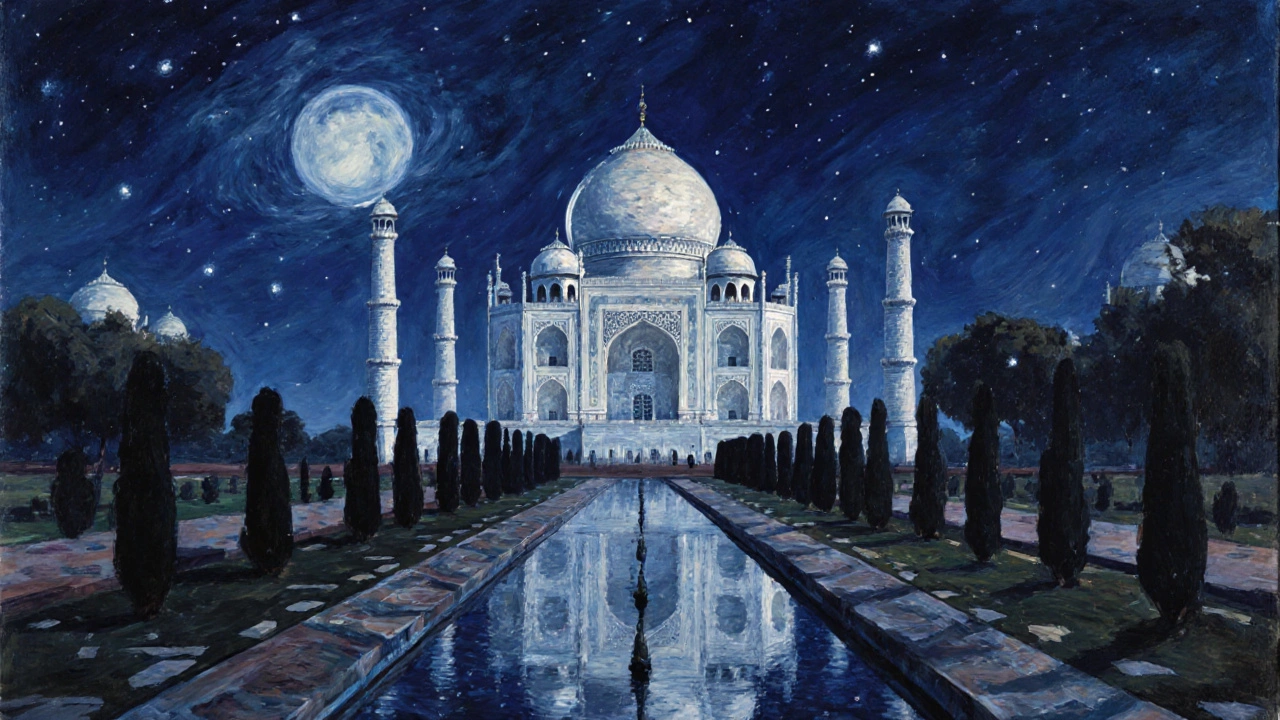
Frequently Asked Questions
When is the best time to see the Taj Mahal?
October through March offers mild weather and clear skies, making sunrise visits especially magical.
How much does an entry ticket cost?
For foreign tourists the fee is ₹1,300 (around $16) for a daytime slot; Indian nationals pay ₹50. Online bookings include a small service charge.
Can I take photos inside the mausoleum?
Photography is prohibited inside the main chamber. You can capture the exterior and the garden freely.
What is the nearest airport?
Indira Gandhi International Airport in Delhi (DEL) is the closest major hub, about 230km away.
Is there a night viewing option?
Limited night tickets are released during the full‑moon period in winter, mainly for foreign tourists. Check the official website for dates.
